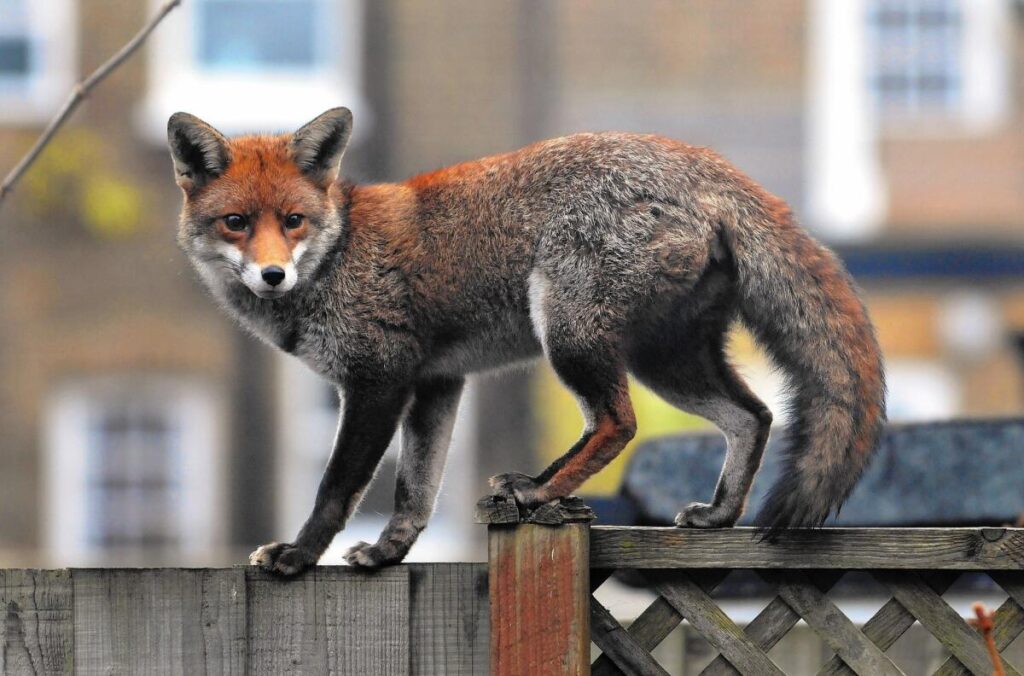In the quiet suburbs and bustling streets of London, foxes live a parallel city life, navigating alleys, back gardens, and urban sprawl. But when misfortune strikes, one woman is often the first responder. Meet Nicki Townsend of The Fox Project, a sanctuary and ambulance service rolled into one for the capital’s most misunderstood wildlife residents.
With a calming voice and nothing more than rubber gloves and yoga attire, Townsend approached a snarling fox with care and instinct recently, guiding the injured animal into a safer space. “All right, baby,” she whispered as she gently cradled its wounded legs a moment that reflects the unpredictability and compassion behind her work.
“You never know what you’re going to find,” Townsend said, reflecting on the chaos and reward of rescuing foxes in an urban jungle.
A Fox’s Urban Tale
Foxes first crept into London’s cityscape in the 1930s as suburban expansion encroached on their natural habitat. Today, an estimated 15,000 foxes roam Greater London, scavenging from bins, slipping through fences, and occasionally sparking admiration or annoyance from residents.
Their omnivorous appetites and comfort with human proximity have made them a polarizing presence. “It’s like Marmite,” Townsend quipped. “You either love them or hate them.”
That divide was the driving force behind The Fox Project, founded nearly 35 years ago by Trevor Williams a former rock bassist turned animal advocate. The group has since grown from advisory roots into a vital rescue organization, saving over 1,400 foxes annually, including 400 cubs, though survival remains a fragile hope.
“Because of the myths that have occurred over the years, there’s still a lot of suspicion about what foxes might be,” Williams explained. “You know, they’re going to bite the baby, they’re going to eat the cat…”
Ambulance on Four Wheels
Townsend spends her days in a VW Caddy turned rescue van, cruising the city’s arteries and narrow country lanes. Onboard, the scent of fox musk clings to the seats, a reminder of the anxious passengers she ferries to safety.
From tangled paws caught in fences to mange-infected strays, the job is rarely easy. One early case a fox that simply bolted taught her not to chase them. “You’re never going to outrun a fox,” she laughed.
More serious calls can be heartbreaking. A recent rescue involved a cub found barely breathing by a concerned couple. “We thought he was asleep,” said Charlotte English. “Then we realized something was wrong.” The cub, sadly, did not survive.
Saving, Socializing, Releasing
While some foxes must be euthanized, others recover. Cubs are raised in packs of five to mimic natural socialization before being released in rural settings. Adults, however, are returned to the urban neighborhoods they know best.
Tracking post-release success remains elusive. A 2016 study found that released foxes often roamed far from their original homes, potentially increasing their risk of injury and death.
Bryony Tolhurst, lead researcher of the study, noted, “There’s an assumption that when you release them, they thrive, and I think that assumption needs to be challenged more.”
Still, for Townsend, each release is a small triumph. “Sometimes they look back, and people like to think they’re saying ‘thank you,’” she said. “But they’re just making sure we’re not following them.”
Even in a city as modern as London, the fate of a fox often rests on the dedication of a few. And in a world where not all tails have happy endings, The Fox Project continues to fight for every one.


